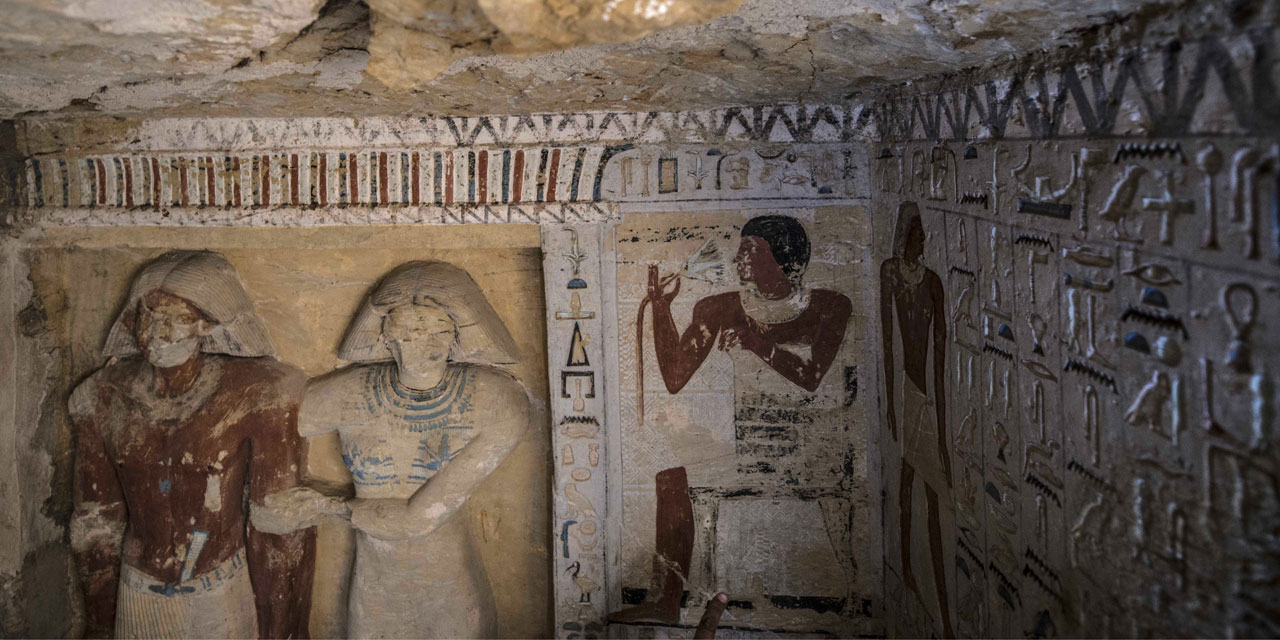The tomb of a priest dating back more than 4,400 years was discovered on the site of Saqqara, near Cairo, by an Egyptian archaeological mission, announced Saturday the authorities.
The tomb of the priest named "Wahtye" dates from the 5th Dynasty (between 2,500 and 2,300 BC), during the reign of Neferirkare, according to the Ministry of Antiquities.
"She belongs to a priest of high rank". The tomb is "exceptionally well preserved, colored with sculptures inside, and belongs to a high-ranking priest," Minister of Antiquities Khaled el-Enany said in front of a crowd of guests on Saturday. .
The tomb contains "scenes showing the owner of the tomb with his mother, his wife and his family, as well as a number of niches with large colorful statues of the deceased and his family," said the ministry in a statement .
Many niches. The niches are 18 and the statues 24, according to the same source which further specifies that the lower part of the tomb contains 26 smaller niches.
In November, at the same site in Saqqara, the Egyptian authorities revealed the discovery of seven graves, including four dating back more than 6,000 years, by the same Egyptian archaeological mission. Archaeologists had notably discovered beetles and mummified cats.
The site of Saqqara, south of Cairo, is a vast necropolis which houses in particular the famous step pyramid of Pharaoh Djoser, the first of the pharaonic era. This monument, built around 2,700 BC by the architect Imhotep, is considered one of the oldest monuments on the surface of the globe.

